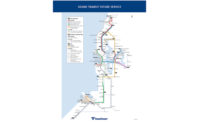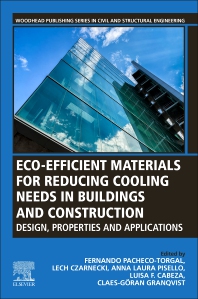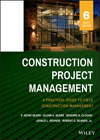Bite by bite, tunnelers will push through layers of glacial deposits to build a crucial section of Sound Transits $2.4-billion, 14-mile light rail system that will eventually connect downtown Seattle to the Seattle-Tacoma International Airport.
The Beacon Hill segment consists of two parallel 4,300-ft-long, 18.8-ft-dia tunnels to be built with a 335-ton earth pressure balance tunnel-boring machine. For the station, two vertical shafts, 50 and 30 ft in diameter, will connect to platforms located about 160 ft below grade.
The station platforms will be mined with "the deepest application of the sequential-excavation mining technique in glacial soil in North America," says Paul Zick, project manager for South San Francisco-based Obayashi Corp., the tunneling contractor. Sequential-excavation mining (SEM) is also known as the New Austrian Tunneling Method.  Click here to view diagrams
Click here to view diagrams
Work has just begun on Beacon Hill, essential to the systems 2009 completion date. In the project area, bedrock is estimated at 3,000 ft deep beneath overlapping sands, gravels, silts, clays and tills varying from rock boulders to soft soils. Recent seismic data also suggest the presence of active faults.
SEM will help accommodate the complex geology at the level of the station. This approach will "open up the shafts in small bites so that the ground deforms in a predictable manner," says Joe Gildner, Sound Transits construction manager. The agency is concerned about subsidence. The heavily urbanized areas above the excavation site make even small surface shifts very problematic, he adds.
Gildner notes that Obayashi has experience with SEM. "This is a unique project in the U.S.," says Gildner. Obayashi beat out teams led by Parsons Transportation Group, Pasadena, Calif., and the Renton, Wash. office of Kiewit Construction Co. for the tunneling job. It was designed by a joint venture of Hatch Mott McDonald, Atlanta, and Jacobs, Pasadena, Calif. Parsons Brinckerhoff, New York City, is construction manager.
Obayashis $280-million contract also includes the west and east portals, a half-mile of elevated track and the subsurface station. Excavation of the main shaft and the auxiliary shaft will begin in earnest this month. The contractor is preparing the ground by jet-grouting and constructing a 3-ft-thick slurry wall to an eventual 160-ft depth. An excavator will dig the shafts, with spoils hoisted out by crane.
Elsewhere, crews are using cut-and-cover techniques to prepare the launch pad and open the portals through which the TBM will enter. The TBM is being built by Mitsubishi Heavy Industries Ltd. in Japan for delivery in June.
The tunnels will be bored along a roughly 5% grade. The primary mucking system will include a 24-in.-wide advancing conveyor with 12 muck cars. Precast concrete liners will be installed in segments. Starting in September from the west portal, the contractor hopes the 21-ft-dia TBM will move at a rate of about 50 ft per day. Completion is slated for May 2006. Then, the TBM will move back to the west portal to bore the twin for a November 2006 completion.
Simultaneous vertical-shaft work must be completed to the degree that the excavated station is able to receive the TBM at the tunnel midpoint for maintenance. The milestone date of intersection is January 2006 for the first tunnel and June 2006 for its twin.



